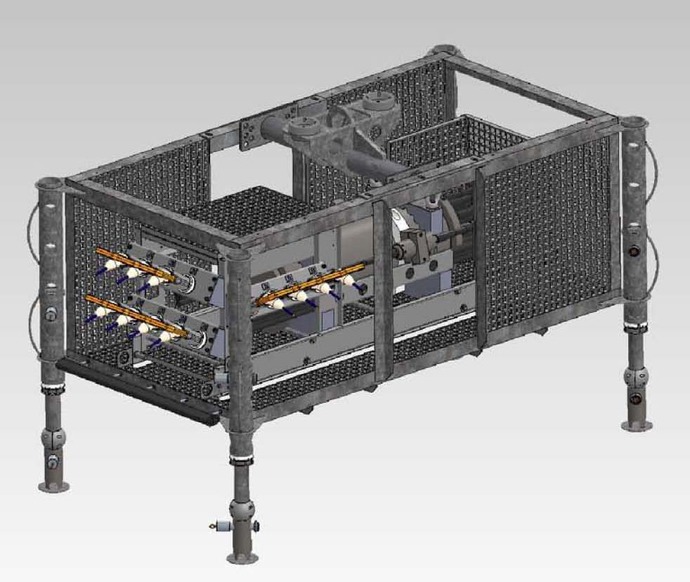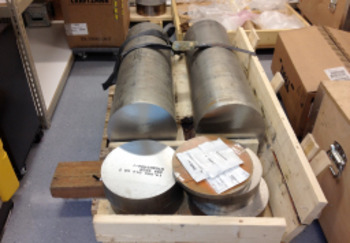- Visions18
- Visions17
- Visions16
- Visions15
- Visions14
-
Construction
- Node Installations Complete!
- Six on the Seafloor!
- New Segment 7
- Defining the SIA
- PN5A Successfully Deployed!
- PN 5A – Jointing Operations
- PN 5A Installation Continues
- On Site to Install PN5A
- Transit to Node 5A
- Port Call in Portland
- PN1D is Installed!
- Burial and Inspection Completed ...
- Humpbacks Visit
- Cable Burial Node PN1C
- Milestone: PN1C is Installed
- Photos of Final Inspection of P ...
- Another RSN Node is Born!
- Cable Burial Continues at Secon ...
- Second Node Installed!
- Splicing Node PN1B into Segment ...
- Recovering End of Segment 3
- Word for the Day: Persistence
- Major Milestone: First Node Ins ...
- Primary Node 1A Powered Up on D ...
- Recovering and Testing Cable Se ...
- OOI Primary Node Installation B ...
- Cable Installation Update
- Dolphins and Puffins and Molas, ...
- Day 51: Seabed Cable Lay Comple ...
- Dynamic Positioning
- Update on Cable Installation
- Completion of Segment 1 Burial
- Leaps and Bounds at the Shore S ...
- Segment 5 Installation Complete ...
- Laying Segment 5
- Bustling Shore Station
- At-Sea Installation Phases
- Installing the Land Cable
- TE SubCom Dependable Propulsion ...
- Divers at Work
- The Day After
- Second OOI Cable Landed
- Second Cable Landing Reschedule ...
- OOI Open House in Pacific City, ...
- The Cable has Landed!
- Last Grapnel Run Before Landing ...
- Preparing for the Cable Landing ...
- Seaplow 101
- Marine Mammal Observations
- Communicating with a Fishing Ve ...
- Cable Deployment Update
- Off Pacific City, Oregon
- Finished with First Segment
- Deploying Repeaters
- Start of First Cable Segment
- Leaving Astoria
- Meeting the Cable Ship in Astor ...
- Cable Laying Vessel Underway
- Photos of OOI Cable Loading
- Northern conduit installed
- Northern Conduit drilling compl ...
- Bubble test for the Southern Co ...
- Drilling of the Northern Condui ...
- Update on Drilling
July 2013
May 2013
December 2012
October 2012
August 2012
July 2012
April 2012
March 2012
January 2012
October 2011
September 2011
August 2011
July 2011
June 2011
March 2011
February 2011
October 2010
June 2010
May 2010
April 2010
- Visions13
- Visions12
- Visions11
- Enlighten
A successful Critical Design Review (CDR) for the RSN Secondary Nodes subsystem took place at the University of Washington's Applied Physics Laboratory on November 21, 2011. The 30 participants in this CDR included representatives from NSF, the Consortium for Ocean Leadership, other OOI Implementing Organizations, RSN Project Management and Science, and, of course, the engineers involved with work on this subsystem. Several out-of-town participants joined via WebEx.
Bridge Between Instruments and Primary Infrastructure
The Secondary Nodes serve as the bridge between the RSN instruments and the Primary Infrastructure. Comprised of low- and medium-power junction boxes and low-voltage nodes, these components convert the 1 Gb/s bandwidth and 375dc voltage from the Primary Nodes to the native interfaces needed by the scientific instruments. Each Junction Box provides up to eight instrument ports that can be configured for 12, 24 or 48V and 10/100BASE-T, RS232 or RS485 data links. Nodes can be daisy-chained, thereby creating extensive expansion capabilities. Some instruments will be directly connected to the Node's seafloor frame; others will be attached to the Node using connectors that can be mated underwater at depths of up to 3000m using an ROV.
Working Prototype Demonstrated
RSN successfully passed the CDR, according to Mike Harrington, the APL senior engineer leading the work on the secondary nodes. The Technical Data Package-- including mechanical models, drawings, printed circuit board schematics, software design, material choices, and heat and pressure analysis--was presented to and reviewed by the attendees during the day-long review. A working prototype system was demonstrated at the RSN Laboratory in Ben Hall on the UW Seattle campus.
Installation and Maintenance Using UNOLS Vessels
This subsystem is designed to be installed and maintained using UNOLS Global Class vessels such as the R/V Thompson and an ROV. The Secondary Node's seafloor frame footprint measures 4' by 8' (see photo at top of this story). Successful deployment testing of a full-size frame from the deck of the R/V Thompson took place during the VISIONS '11 cruise in August 2011.
Next Steps
Next up for the Secondary Nodes is the Test Readiness Review (TRR), when the first article (the first completed unit) will be checked and readiness for formal testing will be assessed. Harrington expects the TRR to take place in Spring 2012. Test procedures are being finalized and machining of titanium for the secondary node pressure housings is under way (see photos).
Grade 5 titanium was chosen after conducting a review of all the possible material choices; its durability and strength are expected to last for 25 years. The forgings purchased for the secondary-node pressure housings will be trepanned, which means the cores will be removed, and those cores will then be reclaimed for other RSN pressure housings, thus reducing the overall cost to the program for titanium.




